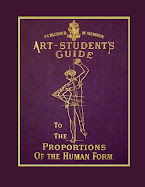
William Hogarth - Analysis of Beauty - Plate 1.
The Analysis of Beauty was written by the 18th century satirist and painter and published in 1753. In it he presents his ideas of beauty and how to render it in art in a clear manner easily understood by the reader. Wikipedia page.
The Analysis of Beauty -
By William Hogarth, William Chesebrough Ostrander, 1908 edition - Google Books result. View the complete book or download a copy.
Republished edition available at Amazon.com: The Analysis Of Beauty (1908)

Original editions at Amazon.com: The analysis of beauty (written with a view of fixing the fluctuating ideas of Taste)
From the preface to the book:
"In 1745, Hogarth published a frontispiece to his engraved works, in which he drew a serpentine- line lying on a painter's pallet, and placed under it the words, The Line of Beauty. It immediately gave rise to considerable discussion and in response to the frequent requests for an explanation, Hogarth wrote and published The Analysis of Beauty. He felt that his theory found corroboration in the precept of Michael Angelo that a figure should always be made pyramidal, serpent-like and multiplied by one, two and three.
He further refers to the torso of an antique statue, figure 1, plate 6, from which Michael Angelo is said to have discovered this principle which gave to his work a character equal to the best antiques. He quotes from Lamozzo, Du Fresnoy, and others in support of his theory that the greatest grace and life that a picture can have is the motion and spirit imparted by large flowing lines and that no forms express motion so well as those of the flame and the gliding, wavy lines of the serpent. One of the quotations from Lamozzo says:
"The Grecians, in imitation of antiquity, searched out the truly renowned proportion, wherein the exact perfection of most exquisite beauty and sweetness appeareth; dedicating the same in a triangular glass unto Venus the goddess of divine beauty, from whence all the beauty of inferior things is derived."
Hogarth comments as follows: "If we suppose this passag
 e to be authentic, may we not also imagine it probable, that the symbol in the triangular glass might be similar to the line Michael Angelo recommended; especially, if it can be proved, that the triangular form of the glass, and the serpentine line itself, are the two most expressive figures that can be thought of to signify not only beauty and grace, but the whole order of form." See figure on back of frontispiece."
e to be authentic, may we not also imagine it probable, that the symbol in the triangular glass might be similar to the line Michael Angelo recommended; especially, if it can be proved, that the triangular form of the glass, and the serpentine line itself, are the two most expressive figures that can be thought of to signify not only beauty and grace, but the whole order of form." See figure on back of frontispiece."A copy for sale at Art of the Print.

The Analysis of Beauty (Paul Mellon Centre for Studies in Britis)

Engravings by Hogarth

Hogarth: A Life and a World

Hogarth: The Artist and the City
















No comments:
Post a Comment